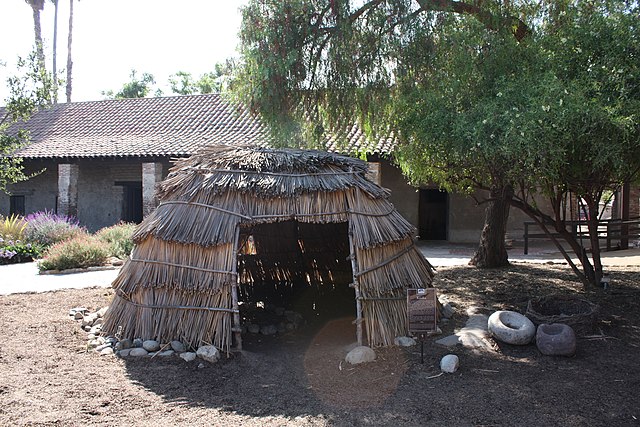Alume was a large Acjachemen village located at the foot of Santiago Peak, upstream from the village of Putiidhem ,within what is now O'Neill Regional Park near the Trabuco Adobe, which was built in 1810 as an outpost of Mission San Juan Capistrano. The village was also recorded as Alaugna and as El Trabuco in San Juan Capistrano mission records, and is also referred to as Alauna, Aluna, and Alona. The village was also acknowledged by the Payómkawichum.
Trabuco Adobe, Rancho Santa Margarita (Nov 1967). Photo courtesy Orange County Archives.
The Acjachemen are an Indigenous people of California. Published maps often identify their ancestral lands as extending from the beach to the mountains, south from what is now known as Aliso Creek in Orange County to the Las Pulgas Canyon in the northwestern part of San Diego County. However, sources also show that Acjachemen people shared sites with other Indigenous nations as far north as Puvunga in contemporary Long Beach.
José de Grácia Cruz, an Acjachemen craftsman and bell ringer at Mission San Juan Capistrano, photo taken ca. June 1909.
Reconstruction of Acjachemen hut at Mission San Juan Capistrano
Acjachemen mortars
Clarence H. Lobo (1912–1985), elected spokesperson of the Juaneño Band of Mission Indians from 1946 to 1985. Lobo wore a Plain-style headdress, even though this was not customary for the Acjachemen.





